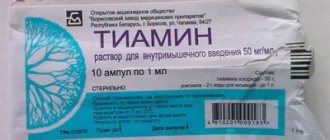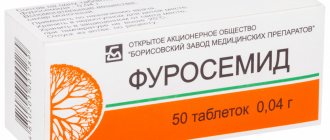It is obvious that products containing colecalciferol can be considered the drugs of choice for the treatment and prevention of vitamin D insufficiency and deficiency: they are included in domestic and foreign clinical recommendations. But in what cases is it appropriate to recommend combined preparations of vitamin D and calcium to visitors and what should their attention be paid to?
From effect to indications
As you know, the main function of vitamin D is to regulate calcium-phosphorus metabolism. In the form of active metabolites, it takes part in the process of calcium absorption in the intestine and its excretion by the kidneys. In the presence of sufficient vitamin D, calcium absorption in the intestine is optimal. If the need for the “sunshine vitamin” is not compensated, calcium absorption decreases. Due to the low level of ionized calcium in the blood, the synthesis of parathyroid hormone is stimulated, which works to increase serum calcium, in particular, it stimulates the leaching of calcium and phosphorus from the bones. This chain of changes leads to a natural result of vitamin D deficiency - a decrease in calcium levels, changes in bone mineralization and, as a consequence, the development of rickets and osteoporosis.
Of course, there is no need to educate clients about these difficulties. Suffice it to say that hypovitaminosis D is associated with a negative calcium balance and decreased bone mineralization. These complications can be prevented by complex preparations of vitamin D and calcium, which potentiate the effect of each component. Their main task and leading indication is the prevention and treatment (as part of complex therapy) of osteoporosis, which usually develops in old age.
- It is appropriate to give preference to colecalciferol and calcium preparations when asking for drugs for the prevention and treatment of osteoporosis in women during or after menopause, as well as for strengthening bones in old age.
Dosage and course of treatment
According to the recommendations of the Russian Association of Endocrinologists, the preventive dose of vitamin D for 18-50 years old is 600-800 IU per day, and for those over 50 years old - 800-1000 IU per day. The dosage of calcium aimed at preventing bone density can be up to 2000 mg per day. In addition, existing recommendations indicate that for better absorption, a single dose of calcium should not exceed 600 mg.
Medicines - sources of vitamin D and calcium have balanced formulas and contain 200 or 400 IU of colecalciferol and 500 mg of calcium. All of them are taken 1 tablet 1-2 times a day, and the average dosage of the components supplied with them does not exceed the recommended daily doses.
- When dispensing drugs of this group to clients, it is appropriate to note that the dosage of the drugs is selected in such a way as to compensate for the body’s needs and to prevent excess vitamin and calcium. Therefore, you cannot independently increase the dose indicated in the instructions - this can lead to an increase in the level of calcium in the blood, which can impair the functioning of the kidneys and blood vessels.
Along with the dosage, it is important to follow the course of treatment recommended in the instructions. On average, it ranges from 4 to 6 weeks, but it may vary slightly for different drugs.
- When consulting a client, it should be emphasized that colecalciferol and vitamin D 3 for a long time without consulting a doctor .
Use during pregnancy, lactation, and childhood
Almost all drugs containing colecalciferol and vitamin D3 can be used during pregnancy and breastfeeding. However, we must not forget that hypercalcemia during pregnancy can adversely affect the development of the fetus. Therefore, the drugs themselves, and their dosage and course of treatment, should be selected by the attending physician.
Children's age is also not a contraindication to the use of the combination of colecalciferol + calcium. But, again, the doctor must decide on prescribing these drugs to children and select the dose and duration of therapy.
What else should you warn the client about?
When dispensing combined preparations of vitamin D and calcium, it is important to take into account that calcium salts reduce the pH of gastric juice, slow down gastric motility and, moreover, easily form complexes with a number of substances, which can interfere with the absorption of drugs. Therefore, it is better to take medications containing calcium separately from other medications - on average 2 hours before or 4-6 hours after, unless otherwise indicated.
In addition, you should remember the most common drug interactions with drugs from the following pharmacological groups:
- Antibiotics of the tetracycline group - when taken simultaneously with calcium supplements, the absorption of antibiotics may decrease. Therefore, tetracycline antibiotics should be taken at least 2 hours before or 4–6 hours after taking calcium supplements.
- Bisphosphonates – when taken simultaneously with colecalciferol and calcium, the absorption of bisphosphonates is reduced. Therefore, the time interval between the use of bisphosphonates and calcium supplements should be at least half an hour, and it is better to take them at different times of the day.
NB! Bisphosphonates are first-line drugs for the treatment of osteoporosis and can be part of a comprehensive treatment regimen along with vitamin D and calcium supplements.
- Cardiac glycosides and calcium channel blockers - when taken together with calcium supplements and/or vitamin D, it is recommended to monitor the level of calcium in the blood to avoid the development of hypercalcemia. The latter increases the risk of fatal arrhythmias in patients receiving digoxin and reduces the effectiveness of calcium channel blockers.
- Thiazide diuretics - reduce calcium excretion, which is associated with an increased risk of hypercalcemia. It is important for patients receiving these drugs to monitor serum calcium levels regularly.
We have listed only the most common drug interactions; their full list is much more extensive. And in order to prevent them, it is important to persistently recommend that the client take any medications separately from calcium and vitamin D preparations. And to make it easier for you to navigate the fairly large assortment, we have prepared a table for downloading, in which we have collected currently registered medications containing colecalciferol and calcium with dosages of active ingredients and indications. We hope that this information will help you easily and quickly select a drug for appropriate requests.
We answer questions live on VKontakte: https://vk.com/pharmznanie
You can discuss the latest news with all your Russian colleagues in chats:
Telegram: https://tglink.ru/pharmorden
VKontakte: https://vk.me/join/AJQ1d_D2XxaDy9IdzL0e6EqH
To leave a comment on this article, you need to register or log in.
Interested in the article? You can find out even more in the section Working in a pharmacy










